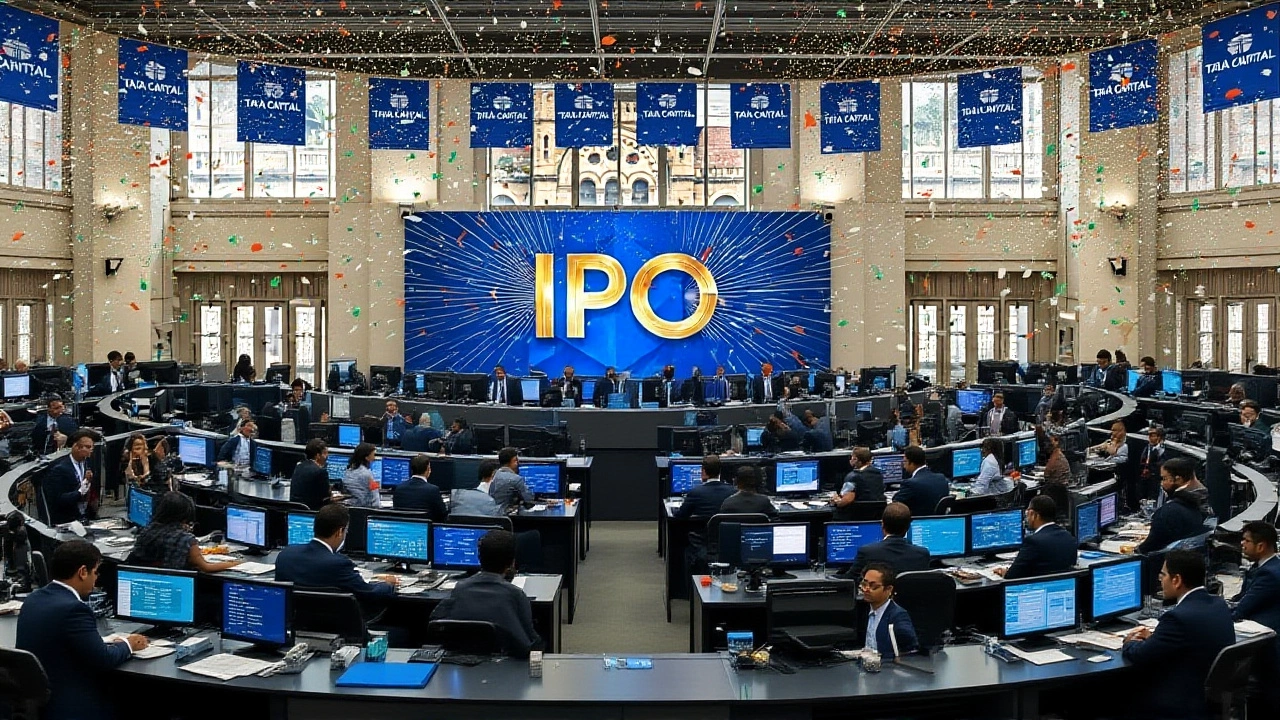
On Tata Capital IPOMumbai, the grey market premium (GMP) slipped to ₹7.5 per share – just a 2.3% cushion above the top of the ₹310‑₹326 price band – prompting a mixed reaction across the market. While the dip suggested modest listing gains, five leading brokerages kept the buy recommendation alive, betting on the strength of the parent group and the NBFC’s growing loan book.
Tata Capital Limited, a diversified non‑banking finance company headquartered in Mumbai, launched a ₹15,511‑crore IPO on October 6, 2025. The issue comprised a fresh issue of ₹6,846 crore and an Offer for Sale (OFS) of ₹8,666 crore by its promoter, Tata Sons Private Limited. The capital raise aimed to fund expansion in retail loans, housing finance and wealth‑management services, adding to a customer base that now exceeds 4 million.
Historically, Tata Capital’s assets under management have ballooned from ₹45,000 crore in FY 2020 to ₹1,20,000 crore in FY 2025, while net profit surged from ₹950 crore to ₹3,200 crore over the same period. A CRISIL AA+ rating underpins its credit credibility, and the firm’s lineage traces back to the Tata Group, founded in 1917 and headquartered at Bombay House, 24 Homi Mody Street, Fort, Mumbai.
The subscription window closed on October 8 2025, with overall bidding at 1.06 times the shares on offer. Qualified Institutional Buyers (QIBs) subscribed 1.28 times, Non‑Institutional Investors (NIIs) 1.19 times, while the retail tranche lingered at 86 % (0.86 times). In other words, big players were fairly eager, but ordinary investors showed caution despite the brand’s clout.
Grey market data painted a nuanced picture. Live Hindustan reported a GMP of ₹7.5 per share, Moneycontrol logged ₹7, and the Economic Times noted a 2 % premium (₹6.52). The spread reflects real‑time volatility in the unlisted market as the clock ticked down on the final subscription hour.
Five brokerages chose to champion the issue:
In a short interview, Siddhartha Khemka said, “Tata Capital’s established retail and SME operations, sound asset management, and digital lending initiatives position it advantageously in India’s expanding credit sector.” Meanwhile, Rajiv Shah added, “The company’s robust fundamentals, varied business portfolio, and reliable parent organisation have garnered widespread appreciation.”
For the average investor, the minimum outlay to secure a retail allocation is ₹14,996 (46 shares at the top band). Small non‑institutional investors (sNIIs) must place a 14‑lot order, amounting to ₹209,944, while big non‑institutional investors (bNIIs) need at least ₹1,004,732. The 86 % retail subscription signals a modest appetite, possibly because the issue size – over ₹15,000 crore – leaves limited headroom for a post‑listing pop.
Market specialists, quoted by the Economic Times, argue that the sheer magnitude of the offering dampens the GMP. One unnamed analyst observed, “The IPO was fairly valued given the strong parentage and growth record, but the issue size was large, leaving limited room for sharp listing gains.” In plain terms, even if the shares debut marginally above the price band, the upside may be muted.

The shares are slated to start trading on the Bombay Stock Exchange and National Stock Exchange on Monday, October 13, 2025. Investors will be eyeing three key metrics:
If the opening hovers near the top of the band, the brokers’ bullish case could gain traction. A flat or sub‑band start would validate the more cautious GMP outlook.
Beyond the IPO, Tata Capital’s trajectory offers context. Between FY 2020 and FY 2025, the firm expanded its loan book by over 150 %, driven by a push into digital channels and tier‑2 city outreach. Its capital adequacy ratio (CAR) has consistently stayed above 18 %, comfortably surpassing RBI mandates. Such fundamentals underpin the optimism expressed by the brokerages, even as the Grey Market whispers caution.
The drop reflected market fatigue after a large issue size. With ₹15,511 crore on offer, investors anticipated limited upside, prompting sellers to lower their bids. Real‑time fluctuations among different tracking platforms also contributed to the spread of reported figures.
It indicates that demand from retail participants fell short of the allotment pool. In practice, many retail applicants may receive a partial or no allocation, depending on how the final draw is conducted.
The OFS introduces a sizable block of shares held by the promoter, potentially increasing supply on the market. However, Tata Sons’ confidence in the pricing – they are selling at the IPO price – signals endorsement, which can stabilize investor sentiment.
Risks include a muted listing debut due to the large issue size, potential credit‑tightening by the RBI affecting NBFC loan growth, and macro‑economic headwinds such as slowing consumer spending. Investors should also watch for any changes in Tata Sons’ shareholding post‑listing.
Allotment results are scheduled for Thursday, October 9, 2025. Successful applicants will receive confirmation via their broker or the stock exchange portal.